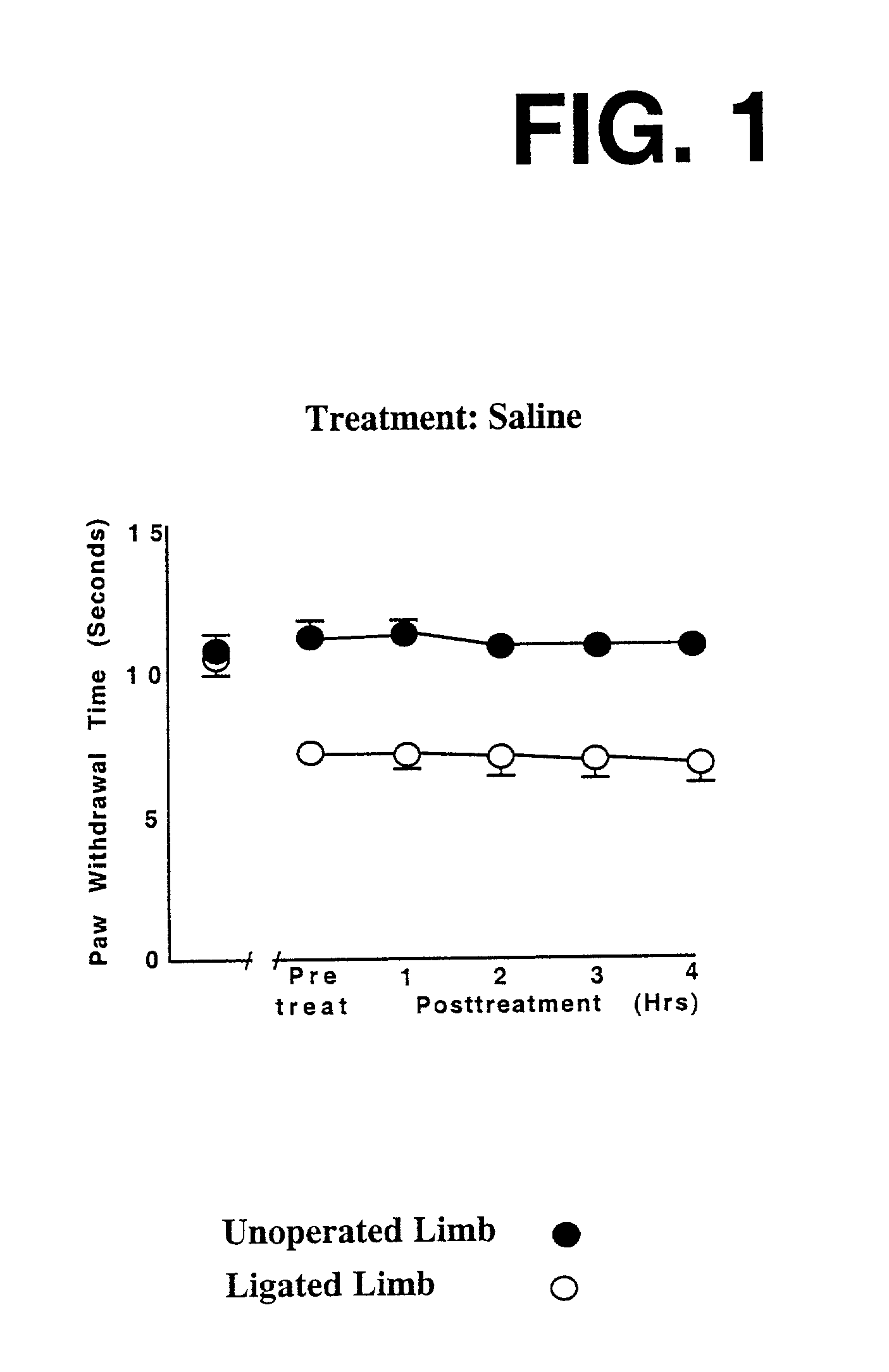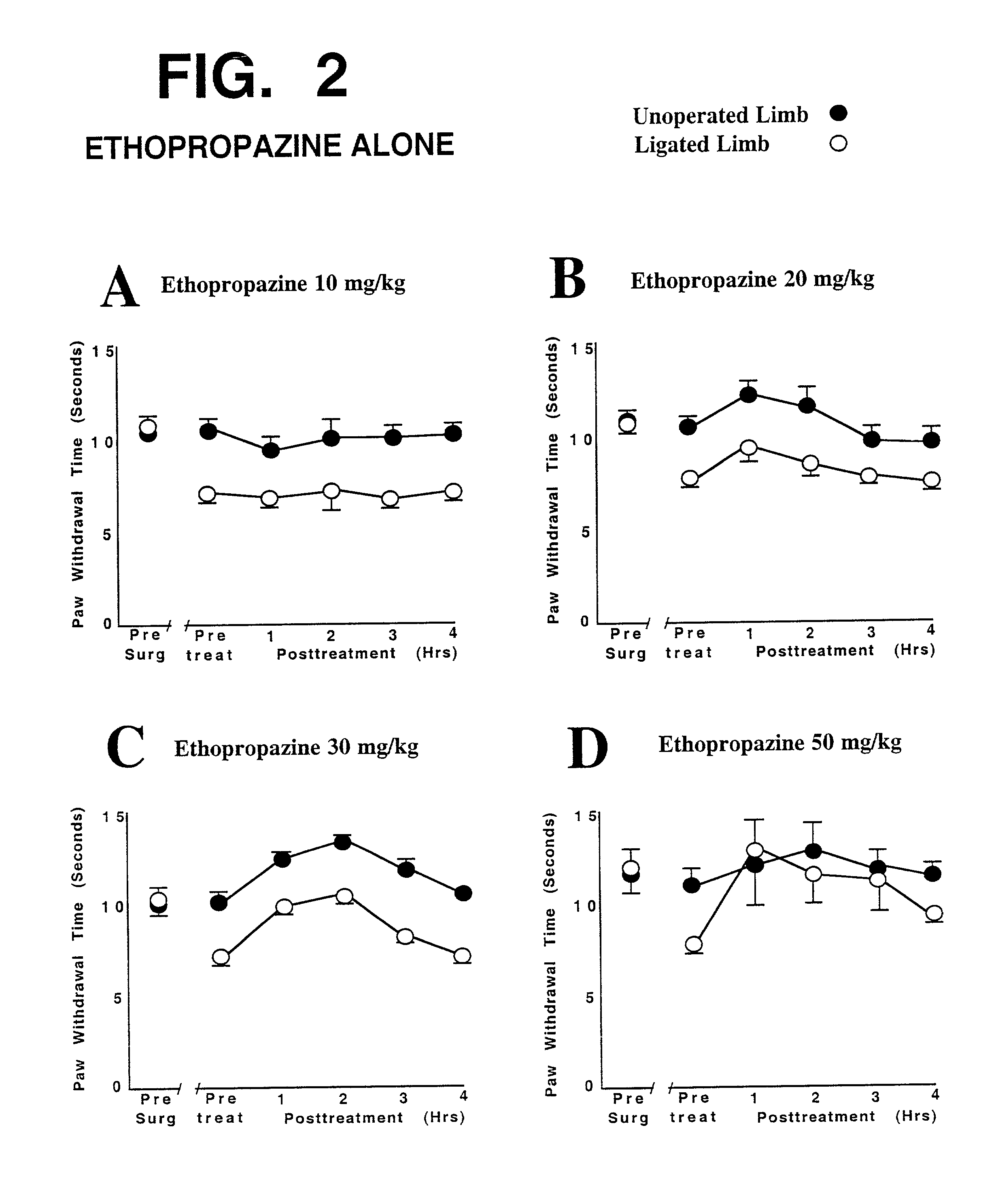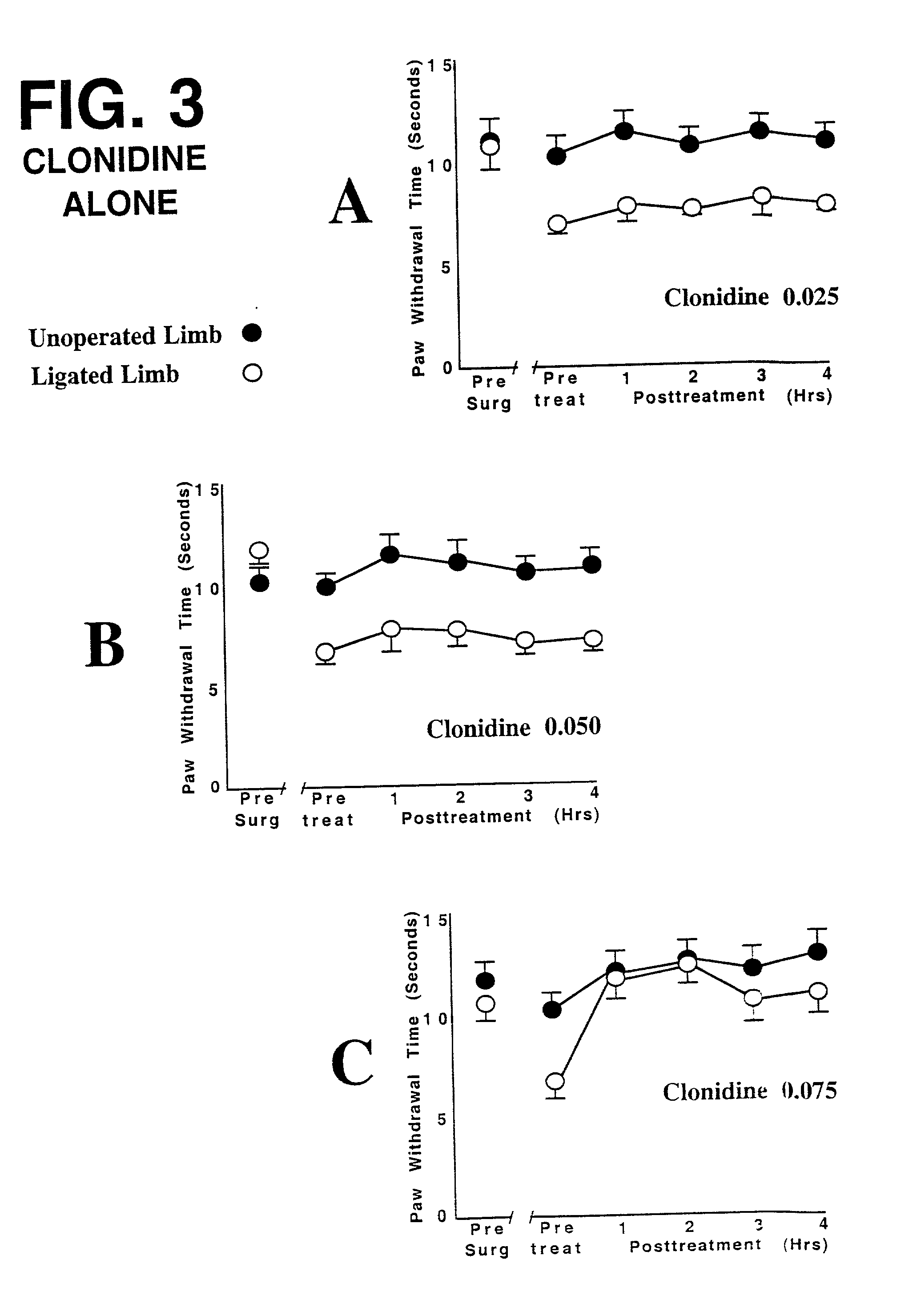Combination of adrenergic agonist and tricyclo-alkylamine for relieving chronic pain without adverse side effects
- Summary
- Abstract
- Description
- Claims
- Application Information
AI Technical Summary
Problems solved by technology
Method used
Image
Examples
example 1
Test Procedures and Control Results
[0201] The first set of in vivo tests involved sciatic nerve ligation in rats, using procedures described in Bennett and Xie, Pain 33: 87-107 (1988). This test involves surgically placing and tightening a loop of suture material around the sciatic nerve in one hind leg of a rat; the other hind leg serves as a control. Within about a week, the ligated sciatic nerve becomes irritated and reaches a hyper-responsive "kindled" state, where it will respond rapidly to even a mild stimulus that is not painful to an untampered leg. As such, it offers a model of what happens in pain pathways that have become pathologically hypersensitized in a human suffering from neuropathic pain.
[0202] In these tests, on the 8th day after surgery, the rat is placed in a testing device which electronically measures how quickly or slowly it acts, in lifting up a paw in response to a standardized mild warming (thermal) stimulus. The warming stimulus is generated by a light be...
example 2
Ethopropazine Alone
[0211] The graphs in FIG. 2 show that IP injection of ethopropazine alone, at dosages ranging from 10 to 30 mg / kg, did not significantly change the pain sensitivity in either limb, as evidenced by the fact that the open (treated) circles did not closely approach the dark (control) circles.
[0212] The graph in FIG. 2D shows that IP injection of ethopropazine at 50 mg / kg significantly changed the level of pain sensitivity in the ligated limb; however, a comparable dose in humans would very likely cause substantial discomfort (dry mouth, blurred vision, gastrointestinal disturbances) due to the strong anticholinergic activity of ethopropazine.
[0213] As mentioned above, an important feature of FIGS. 2B and 2C is that both curves rose, substantially, at the 2 and 3 hour testing times. This indicates that ethopropazine, by itself, showed effects in reducing neuropathic pain (lower curve, open circles), and in reducing general (non-neuropathic) pain (upper curve, closed c...
example 3
Clonidine Alone
[0214] Clonidine also was tested at several dosages, by itself, using the same procedures described in Example 1. The graphs in FIGS. 3A, 3B and 3C show the pain sensitivity in each limb when the treatment used was IP injection of clonidine at 0.025 mg / kg, 0.05 mg / kg or 0.075 mg / kg, respectively.
[0215] At the two lower doses (0.025 mg / kg and 0.05 mg / kg), clonidine showed no significant relief of neuropathic pain. At the highest dose tested (0.075 mg / kg), significant and relatively sustained neuropathic pain relief was shown. However, at that dosage, the rats displayed significant sedation. In humans, a comparable dose would very likely produce both severe sedation, and a lowering of blood pressure to an unacceptable and potentially dangerous degree.
PUM
| Property | Measurement | Unit |
|---|---|---|
| transmembrane permeation | aaaaa | aaaaa |
| concentrations | aaaaa | aaaaa |
| volume | aaaaa | aaaaa |
Abstract
Description
Claims
Application Information
 Login to View More
Login to View More - R&D
- Intellectual Property
- Life Sciences
- Materials
- Tech Scout
- Unparalleled Data Quality
- Higher Quality Content
- 60% Fewer Hallucinations
Browse by: Latest US Patents, China's latest patents, Technical Efficacy Thesaurus, Application Domain, Technology Topic, Popular Technical Reports.
© 2025 PatSnap. All rights reserved.Legal|Privacy policy|Modern Slavery Act Transparency Statement|Sitemap|About US| Contact US: help@patsnap.com



